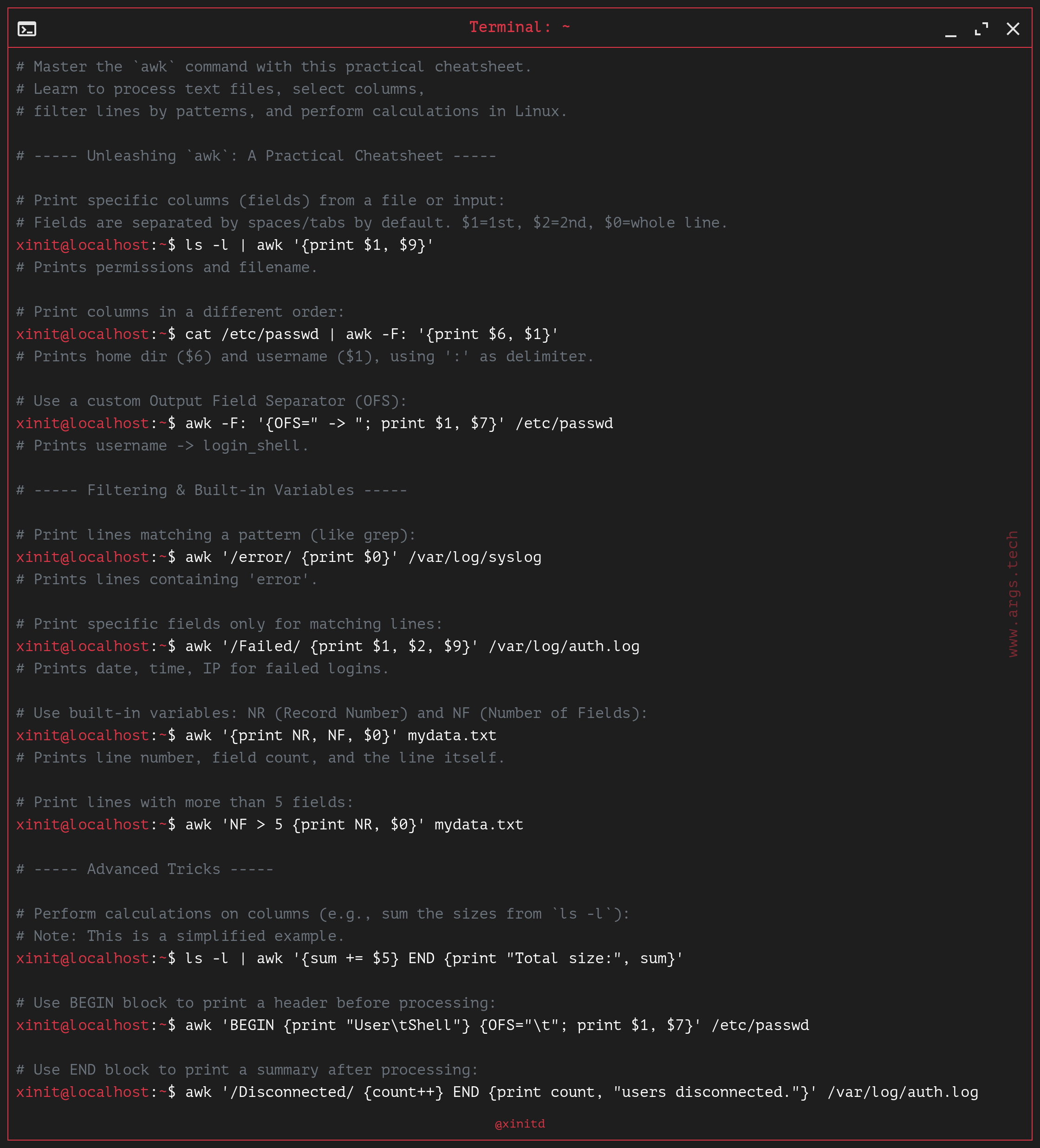Linux `awk` Command Cheatsheet: Text Processing Made Easy
# Master the `awk` command with this practical cheatsheet.
# Learn to process text files, select columns,
# filter lines by patterns, and perform calculations in Linux.
# ----- Unleashing `awk`: A Practical Cheatsheet -----
# Print specific columns (fields) from a file or input:
# Fields are separated by spaces/tabs by default. $1=1st, $2=2nd, $0=whole line.
xinit@localhost:~$ ls -l | awk '{print $1, $9}'
# Prints permissions and filename.
# Print columns in a different order:
xinit@localhost:~$ cat /etc/passwd | awk -F: '{print $6, $1}'
# Prints home dir ($6) and username ($1), using ':' as delimiter.
# Use a custom Output Field Separator (OFS):
xinit@localhost:~$ awk -F: '{OFS=" -> "; print $1, $7}' /etc/passwd
# Prints username -> login_shell.
# ----- Filtering & Built-in Variables -----
# Print lines matching a pattern (like grep):
xinit@localhost:~$ awk '/error/ {print $0}' /var/log/syslog
# Prints lines containing 'error'.
# Print specific fields only for matching lines:
xinit@localhost:~$ awk '/Failed/ {print $1, $2, $9}' /var/log/auth.log
# Prints date, time, IP for failed logins.
# Use built-in variables: NR (Record Number) and NF (Number of Fields):
xinit@localhost:~$ awk '{print NR, NF, $0}' mydata.txt
# Prints line number, field count, and the line itself.
# Print lines with more than 5 fields:
xinit@localhost:~$ awk 'NF > 5 {print NR, $0}' mydata.txt
# ----- Advanced Tricks -----
# Perform calculations on columns (e.g., sum the sizes from `ls -l`):
# Note: This is a simplified example.
xinit@localhost:~$ ls -l | awk '{sum += $5} END {print "Total size:", sum}'
# Use BEGIN block to print a header before processing:
xinit@localhost:~$ awk 'BEGIN {print "User\tShell"} {OFS="\t"; print $1, $7}' /etc/passwd
# Use END block to print a summary after processing:
xinit@localhost:~$ awk '/Disconnected/ {count++} END {print count, "users disconnected."}' /var/log/auth.log
